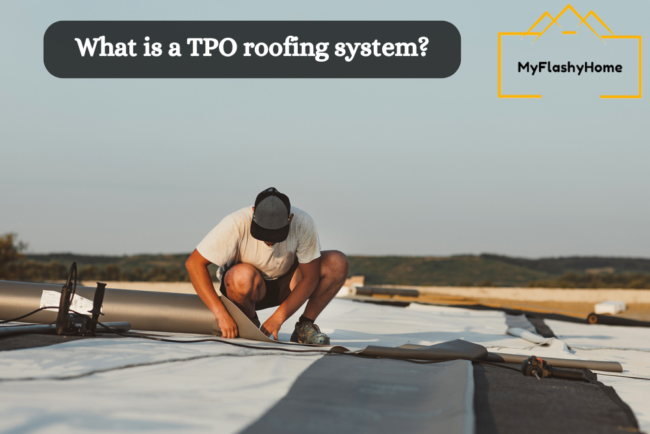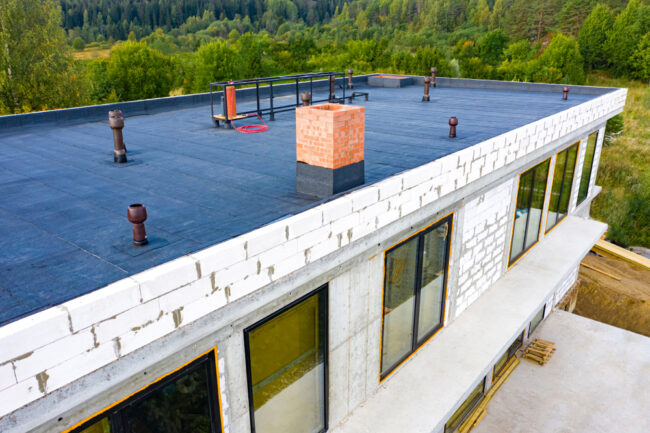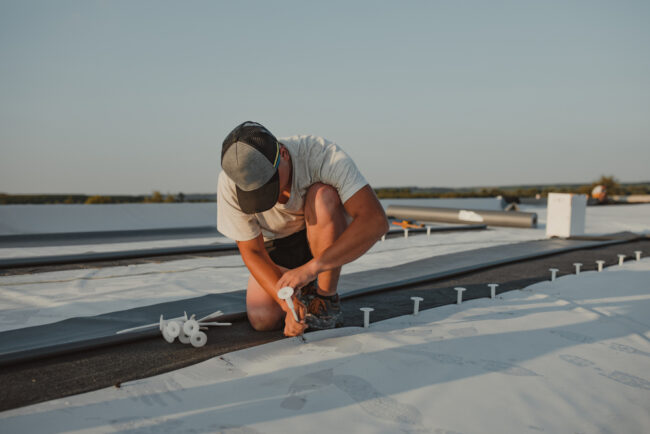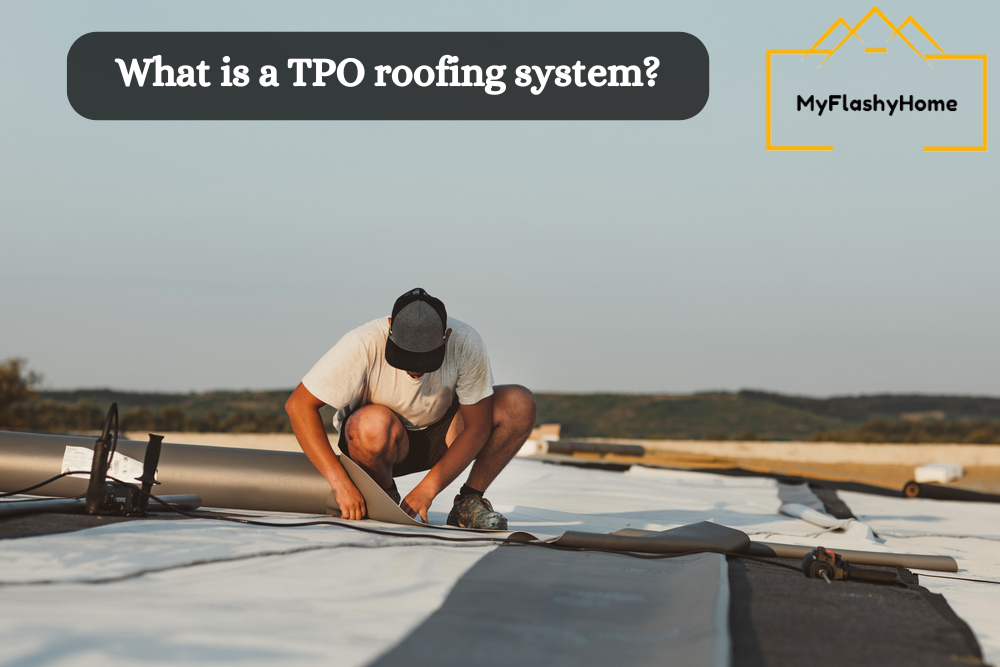TPO (thermoplastic polyolefin roofing) is a single-ply roofing membrane that is mostly utilized in homes and businesses, like flats or low-slope roofs. Its longevity, affordability, and energy efficiency make it a popular option. The main question I have in my mind is, What is TPO roofing? Let’s discuss.
What is TPO roofing?

TPO roofing is a synthetic roofing made of polypropylene and ethylene-propylene rubber, along with other additives that make it strong and flexible. It is produced in big sheets that are heat-welded to form a seamless, impenetrable barrier.
What are the key features of TPO roofing?
Durability: It resists UV rays, chemical exposure, and punctures.
Energy Efficiency: TPO membranes are white or light-colored, which reflect sunlight and reduce heat absorption.
Cost-Effective: It is more affordable compared to PVC or EPDM and its lifespan is longer than others, that is, 20-30 years with maintenance.
Eco-Friendly: The main benefit of TPO is that it’s recyclable. Its energy efficient properties are useful to reduce the carbon footprints of buildings.
Easy installation and maintenance: Because TPO membranes are lightweight and simple to install, labor costs can be decreased. It also needs less upkeep.
Where can we use TPO roofing?

Commercial Buildings: TPO is ideal for commercial establishments, industries, warehouses, and office buildings.
Residential Buildings: It can be used for our homes or flats.
Industrial use: TPO roofing is beneficial for industrial use due to its resistance to chemicals and UV rays.
What are the advantages of TPO roofing?
- This ability reflects sunlight, thereby decreasing cooling costs.
- Resistant to fungi, bacterial growth, and accumulation of dirt.
- Very flexible: thus, able to be adapted to a variation of roof sizes and shapes.
- It comes in different thicknesses and colors (white being the most popular).
What are the disadvantages of TPO roofing?
- Quality is different for different manufacturers; the choice should be made from reputable brands.
- May not be as durable as PVC under extreme temperatures.
- Seam integrity is a concern if not properly installed.
What is better, EPDM or PVC? Or TPO?
TPO vs. PVC: The TPO is lower priced, but if compared to PVC, it will not last as long in abusive conditions.
TPO vs. EPDM: While TPO is more reflective and more energy-efficient, EPDM, on the other hand, is more durable in cold climates.
How long does TPO roofing last?
Generally, TPO roofing has a lifespan ranging from 20 to 30 years, depending on installation quality, membrane thickness, climate conditions, and maintenance. If the installation is proper and maintenance is up to par, TPO roofs in moderate climates can reach up to 30 years. On the contrary, exposure to extreme weather conditions or poor maintenance would certainly shorten those years.
Are TPO roofs expensive?
Compared to other roofing alternatives, TPO roofing is not very expensive, costing about $5-$9 per square foot installed. They are considered reasonably priced when durability and energy efficiency can be matched with performance, making them popular for use on flat or low-slope roofs.
How to do TPO roofing installation?

Preparation and Safety Measures: Make sure proper safety gear and tools are available before starting the mounting.
Roof Deck Inspection and Repair: Inspecting the roof deck for damage and performing necessary repairs to create a stable base.
Thermal Insulation and Cover Board Installation: Lay the thermal insulation and cover board for thermal efficiency and a smooth surface.
Laying and Positioning of TPO Membrane: Roll out and position the TPO membrane properly for alignment and overlap.
Welding and Seaming TPO Membrane: Complete TPO seam heat welding, ensuring a secure watertight seam.
Flashing and Detailing: Install flashings around edges, penetrations, and corners to avoid leak spots.
Inspections and Quality Control: Inspect the roof installation, seams, and overall quality.
Final Words:
TPO roofing is a durable, affordable, energy-saving envelope for commercial or residential buildings. The sector has adopted TPO due to its reflective, green-building, and quick-to-install attributes, especially for flat or low-slope applications. Nevertheless, proper installation and maintenance are key components in extending the life of TPO roofing to a maximum of 20-30 years. TPO rounds out the better pay-off mix in terms of affordability and performance when compared to PVC or EPDM, making TPO a more reliable option for the new age of roofing.

